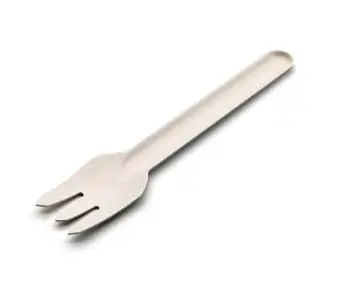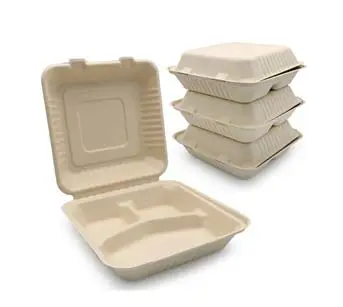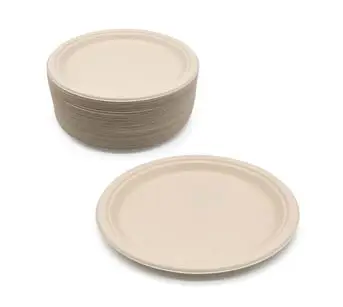In an era where environmental consciousness is steadily gaining momentum, the choice to embrace sustainable alternatives has become a crucial aspect of our daily lives. Compostable bowls have emerged as one such eco-friendly option, garnering attention for their potential to reduce plastic waste and contribute to a healthier planet. However, as with any new product, it is essential to thoroughly understand their properties and safety considerations before integrating them into our routines.
This article aims to explore the question:are compostable bowls microwave safe? To address this query comprehensively, we shall delve into the definition of compostable bowls, delve into the growing concerns for environmental sustainability, and emphasize the importance of understanding their safety in various scenarios.
Definition of Compostable Bowls
Compostable bowls are a type of food container designed to be environmentally friendly by utilizing materials that can naturally break down without leaving harmful residues in the environment. Unlike biodegradable items that may require specific conditions or lengthy periods for decomposition, compostable bowls can undergo this process within a shorter timeframe and without leaving any toxic byproducts behind.
Compostable disposable bowls are an ideal choice for individuals looking to reduce their carbon footprint and prioritize sustainable alternatives. These bowls offer a convenient and guilt-free option for eating on-the-go, without compromising on environmental considerations.
These bowls are typically made from plant-based materials such as cornstarch or sugarcane bagasse or from biodegradable polymers like polylactic acid (PLA). The intention behind using these materials is to reduce reliance on non-renewable resources like traditional plastics derived from fossil fuels.
Growing Concern for Environmental Sustainability
Our society's increasing concern for environmental sustainability stems from alarming realities surrounding pollution and climate change. The detrimental effects of single-use plastics on ecosystems have urged individuals and organizations alike to seek out alternative solutions that minimize harm to nature.
Plastic waste has proven particularly problematic due to its resistance to natural decomposition processes, leading to massive accumulation in landfills and marine environments. Consequently, there has been a sweeping wave of support for sustainable practices, prompting the innovation and adoption of compostable bowls as an eco-friendly alternative to traditional disposable tableware.
Compostable soup bowls are gaining popularity as a sustainable solution to the issue of plastic waste. These bowls provide a safe and environmentally-friendly option for serving hot soups and other food items, reducing the reliance on non-biodegradable materials and minimizing the impact on our planet.
Importance of Understanding the Safety of Compostable Bowls in Various Scenarios
While compostable bowls offer potential benefits in terms of reducing waste and promoting sustainability, it is vital to understand their safety implications before utilizing them in different scenarios. Microwave safety is a topic of primary concern as many individuals rely on this convenient appliance for heating food quickly.
It is essential to ensure that using compostable bowls does not compromise safety or lead to unintended consequences such as melting, leaching harmful chemicals into food, or posing a fire hazard. By investigating the microwave safety aspect thoroughly, we can make informed decisions about incorporating compostable bowls into our daily routines without compromising our well-being or the environment.
Understanding Compostable Bowls
Composition and materials used in compostable bowls
Compostable bowls are designed to be environmentally friendly alternatives to traditional disposable bowls. They are typically made from a combination of plant-based materials and biodegradable polymers. Plant-based materials commonly used include cornstarch and sugarcane bagasse, which are renewable resources that can be easily grown and harvested.
These natural materials provide structural integrity to the bowl while also ensuring its biodegradability. Biodegradable polymers, such as PLA (polylactic acid), are often blended with plant-based materials to enhance durability and heat resistance.
Benefits of using compostable bowls
The use of compostable bowls offers several significant benefits in terms of reducing plastic waste, minimizing landfill accumulation, and supporting sustainable agriculture through composting. Firstly, by opting for compostable bowls instead of traditional plastic ones, we can significantly decrease the amount of non-biodegradable waste that ends up in landfills or pollutes our oceans. Plastic waste poses a severe threat to wildlife and ecosystems, so making the switch is an essential step towards environmental preservation.
Additionally, compostable bowls contribute positively to the process of composting by providing valuable organic material for nutrient-rich soil production. When these bowls decompose in a controlled environment such as a composter or industrial facility, they break down into organic matter that can be utilized as fertilizer for sustainable agriculture practices.
This not only reduces dependency on chemical fertilizers but also helps to enrich the soil and support healthier plant growth. By choosing compostable bowls over their non-biodegradable counterparts, we actively participate in preserving our planet's resources while promoting a more sustainable future for generations to come.
Microwave Safety: The Basics
How microwaves work and their effects on different materials
Microwaves operate by emitting electromagnetic waves that generate heat through two primary mechanisms: dielectric heating and molecular rotation. Dielectric heating occurs when the electric field of the microwaves interacts with electrically polarized molecules in a substance, causing them to oscillate rapidly and generate heat.
Meanwhile, molecular rotation refers to the way microwaves cause molecules with a dipole moment to rotate back and forth, resulting in friction and subsequent heat generation. These heating mechanisms allow microwave ovens to efficiently warm or cook food.
Interaction with different types of substances
Microwave ovens interact differently with various substances based on their electrical conductivity. Conductors, such as metals, readily absorb microwave energy and can cause sparks or pose fire hazards in the appliance. Insulators, on the other hand, do not conduct electricity well and tend to resist microwave penetration; hence they may take longer to heat up compared to conductive materials.
Common microwave-safe materials and their properties
When it comes to using microwave ovens safely, certain materials have been deemed suitable for this purpose. Glass and ceramic containers are excellent choices due to their non-reactive nature and ability to withstand high temperatures without warping or releasing harmful substances into food. Moreover, specific types of plastics like polypropylene (PP) or polyethylene (PE) are also considered microwave-safe because they do not melt or leach harmful chemicals into food under normal usage conditions.
Understanding the limitations of microwave-safe materials is crucial as well. While glass, ceramics, PP, and PE are generally safe for use in microwaves, it's important to avoid using any plastic container that is not explicitly labeled as 'microwave-safe.' Additionally, containers made from melamine or polystyrene should never be used in microwaves, as they can release toxins into food when exposed to high temperatures.
Compostable Bowls in the Microwave: Exploring the Safety Aspect
Factors influencing microwave safety of compostable bowls
Several factors determine whether compostable bowls can be safely used in microwave ovens. The material composition and heat resistance of the bowl are crucial considerations.
Compostable bowls are typically made from plant-based materials like cornstarch or sugarcane bagasse, which have varying levels of heat resistance. Thicker and more substantial compostable bowls tend to fare better in microwave heating as they provide better insulation against excessive heat.
Thickness and insulation properties
The thickness of compostable bowls is directly linked to their ability to withstand microwave heating. Thicker walls offer better thermal insulation, reducing the risk of burns or scalds when handling hot contents after microwaving. Additionally, thicker materials can help distribute heat more evenly throughout the bowl, preventing localized hotspots that could compromise the structural integrity of the material.
Manufacturer's guidelines and certifications
To ensure safe usage, it is paramount to follow the manufacturer's guidelines for using compostable bowls in microwaves. Reputable manufacturers provide clear instructions on whether their specific products are suitable for microwave heating or if there are any limitations regarding time or power settings. Moreover, certifications from recognized organizations such as ASTM International or the Biodegradable Products Institute (BPI) indicate that a product has undergone rigorous testing to validate its safety standards.
Case Studies on Compostable Bowl Brands
Researching specific brands' claims on microwave safety
To gain further insights into the use of compostable bowls in microwaves, researching specific brands' claims is essential. Examining manufacturer's instructions for use is crucial to understanding any limitations or precautions mentioned. It is also valuable to analyze customer reviews and experiences, as they can provide real-world feedback on the safety and functionality of compostable bowls when used in microwave settings.
Examining manufacturer's instructions for use
Manufacturer's instructions offer vital information on whether a particular brand of compostable bowls can be safely used in microwaves. These instructions typically outline recommended power levels, time limits, and any specific precautions to be taken. Paying close attention to these guidelines ensures optimal microwave performance while minimizing any potential risks associated with using compostable bowls.
Analyzing customer reviews and experiences
Customer reviews and experiences provide valuable insights into how well compostable bowls perform in microwave ovens. Reading through feedback from individuals who have actually tried using specific brands can give a clearer understanding of the safety aspects involved. Positive reviews highlighting successful microwave usage without adverse effects would indicate that certain brands are indeed safe choices for heating food.




